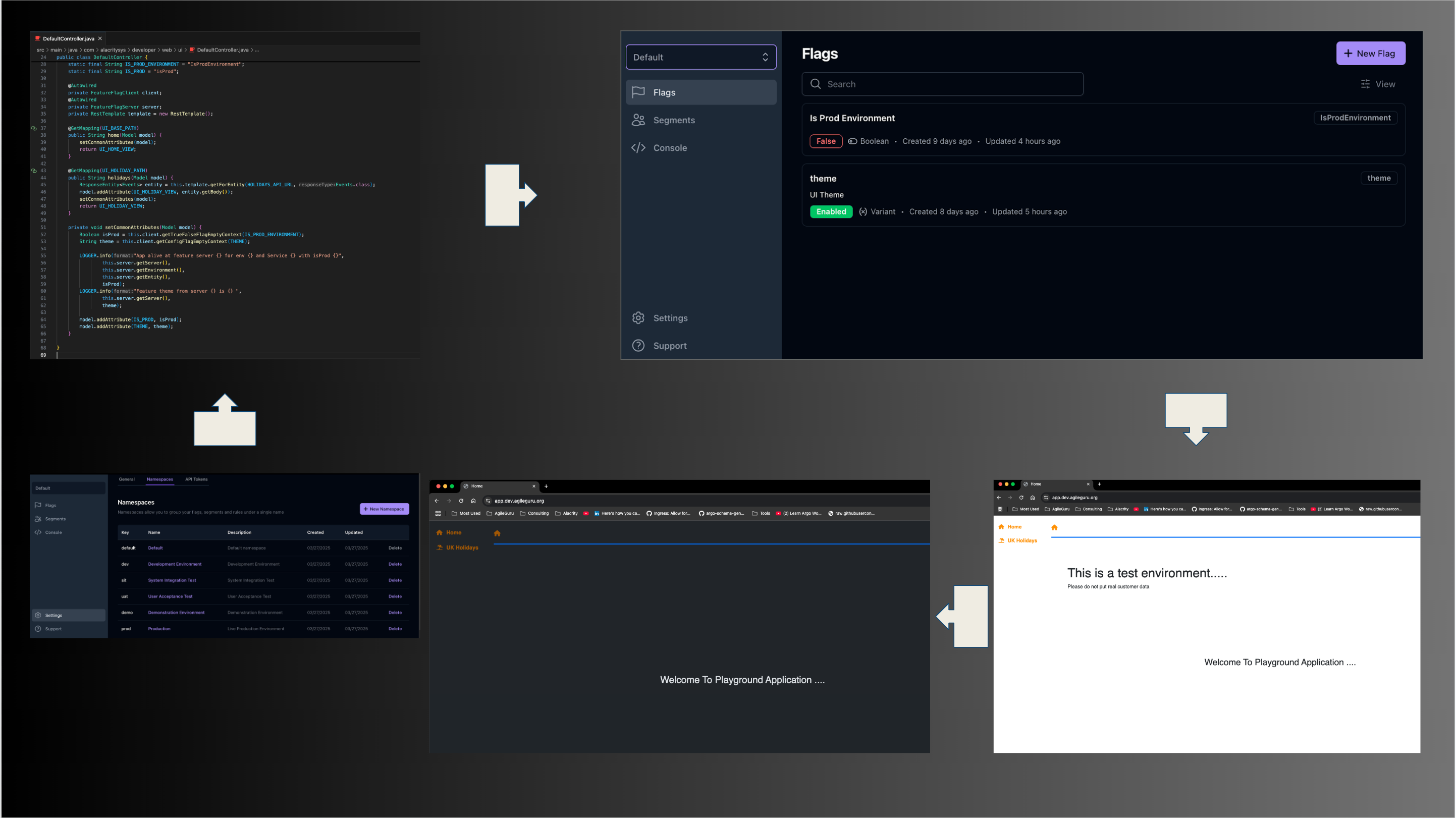Innovations / Solutions / Applications / Cloud-Native
AgileGuru Engineering blog on innovative solutions and technical excellence by engineers and architects.

Feature Flags For Fearless Software Delivery Without Rollback.
Guru Raghupathy, 03 June 2025
Managing the complexities of software delivery can often feel like navigating a minefield, especially when striving for rapid deployment. Screnarios, where releasing new features quickly and safely is paramount, FEATURE FLAGS emerge as an indispensable tool. Far more than just simple on/off switches, these powerful mechanisms offer a dynamic way to control the visibility and availability of new code, allowing teams to de-risk deployments, conduct A/B tests, and even perform phased rollouts with unprecedented agility.
Speedy Delivery Of Services And Features Is Non-Negotiable
As an engineering manager, the tightrope walk of delivering new software features is a familiar one. On one side, the pressure to ship quickly; on the other, the ever-present fear of introducing bugs that derail customer experience. To navigate these tricky and risky scenario we leverage feature flags as our go-to solution. Releasing new features quickly and safely with feature flags, solidifies belief that they're less of a technical tool and more of a strategic lever for effective management.
The Problem : The "Big Bang" Release Dilemma
Without feature flags, our traditional approach would have been a "big bang" release: develop everything, thoroughly test in a staging environment, and then deploy all changes to production simultaneously. The problem?
- Risk Saturation : If something went wrong post-deployment, pinpointing the root cause in a massive code drop is incredibly difficult and time-consuming.
- Deployment Anxiety : Every deployment becomes a nerve-wracking event, often requiring late-night or weekend work to minimize user impact.
- Delayed Feedback : We wouldn't get real-world feedback until after the feature was fully live, making course correction expensive.
- Blocked Progress : Other, smaller features or bug fixes would be held hostage by the needed release, creating a backlog bottleneck.
The Solution: Feature Flags to the Rescue
When we release new funtionalities via new deployments, feature flags can become strategic advantage. Instead of a single, monolithic deployment, we can brake the project into smaller, independently shippable components, each wrapped in its own feature flag.
Here’s how to manage it:
- Granular Control : Flag the new backend integration separately from the UI changes, and even smaller components within the UI (e.g., a new progress bar). This meant we can deploy the underlying infrastructure before the UI was ready, testing it in production without impacting users.
- Phased Rollout : Once we wearere confident in the core components, we can start a phased rollout.
- Internal Dogfooding : First, we enable the features for our internal teams in lower environments, allowing us to get real-time feedback and catch edge cases that our QA environment missed.
- Small User Segments : Next, we enable the features for a very small percentage of our user base (e.g., 1% of new sign-ups). We closely monitored analytics and error rates.
- A/B Testing : This allowed us to A/B test the new onboarding flow against the old one, quantitatively proving the positive impact of chnages before a full rollout.
- Instant Kill Switch : The most crucial benefit is the "kill switch." If we encountered a hiccup in a new integration during the 5% rollout, we simply flipped the flag off for that segment. Users were instantly reverted to the old, stable flow. No emergency hotfixes, no frantic rollbacks, no widespread customer impact. The engineering team gets breathing room to fix the issue calmly, and we re-enabled the flag once resolved.
- Reduced Deployment Stress : Deployments can become routine, almost boring. We can start deploying small, self-contained changes behind flags. This will reduce the risk associated with each deployment, making the process much less stressful for the team.
- Continuous Delivery, Not Just Integration : This approach truly enabled continuous delivery. We can constantly merge and deploy code to production, knowing that features could be activated or deactivated on demand centrally.
Conclusion
As an engineering manager, feature flags aren't just about code; they're about:
- Risk Mitigation : They are your primary tool for de-risking high-stakes releases.
- Empowering Your Team : They reduce the pressure on engineers during deployments, allowing them to focus on quality and innovation.
- Data-Driven Decisions : They facilitate A/B testing and phased rollouts, allowing you to validate assumptions with real user data before committing to a full launch.
- Business Agility : They provide the flexibility to quickly respond to issues or change direction without lengthy development cycles.
- Improved Collaboration : They foster better alignment with product and marketing, as you can discuss gradual rollouts and gather early feedback.
If you're not already heavily leveraging feature flags in your software delivery pipeline, I urge you to investigate them. They've transformed how we approach releases, turning what used to be a source of anxiety into a well-orchestrated, data-informed process. Projects can be a success, not just because of the brilliant engineering, but because we managed its delivery with surgical precision, thanks to the power of feature flags.
Author : Guru Raghupathy , 03 June 2025